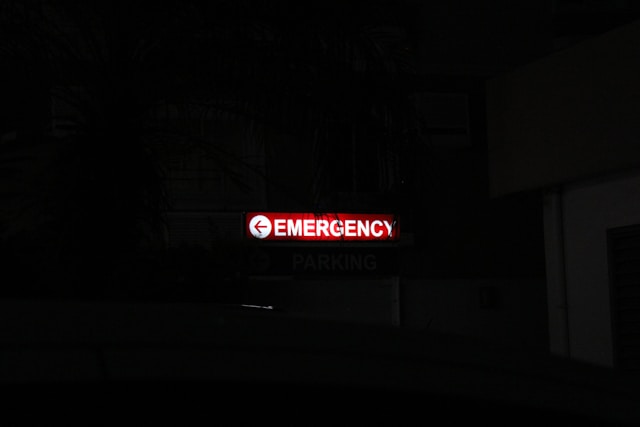- Change theme
What Are Personal Medical Alert Systems and How Do They Work?

As people grow older or deal with ongoing health issues, medical emergencies can happen more often.
23:22 18 June 2025
As people grow older or deal with ongoing health issues, medical emergencies can happen more often. Getting help can mean recovering faster or avoiding worse problems.
As a result, families and caregivers seek ways to ensure their loved ones receive help promptly. This is important if someone lives alone. Mobile phones may be everywhere, but they may not be easy to reach during an unexpected fall or health scare. Personal medical alert systems fill this gap and are becoming more crucial in healthcare today.
These gadgets not only help users feel secure but also serve as a quick way to call for help within moments. To choose one as part of a safety plan for yourself or your family, it is important to know what they are and how they work.
Let’s take a closer look at what a personal medical alert system is.
What Is a Personal Medical Alert System?
A personal medical alert system is a safety tool that links users to emergency services at the press of a button. For instance, an elderly person living in Canada will need to wear a personal medical alert system for Canadian seniors, usually worn as a wristband or pendant. It lets seniors or those with medical issues reach out for help fast during falls, heart attacks, or other emergencies.
Many seniors in Canada prefer small, water-resistant alert pendants that they can wear at home and when they go out. These systems include GPS tracking, fall alerts, and round-the-clock monitoring. Designers create them so people with mobility or hearing issues can use them efficiently. Caregiver apps are sometimes included in these systems. These apps provide location details and activity updates, which help families feel more at ease.
This alert system works well for older adults who like being independent but want safety support. It works for those who live independently, spend time outdoors, or manage chronic illnesses such as heart problems or diabetes. Wearing a device lets them get help fast with just a button.
How Does It Work?
To better understand personal medical alert systems, we need to examine how they operate. While the basic idea remains the same, different models may feature different components or technologies. Still, the primary goal remains the same: to ensure quick and reliable communication during an emergency.
1. The Wearable Help Button
The wearable help button is central to any personal medical alert system. People wear it as a wristband like a watch or around their neck like a pendant. When someone presses the button, it signals either the system's base unit or links to a monitoring center. This depends on whether the system works at home or on the phone.
The button is made to be simple, so using it takes minimal effort, which is essential during challenging or stressful emergencies. Many of the newer buttons are waterproof. This allows users to wear them in the bath or shower, where falls are more likely to occur than in other places.
2. Base Unit or Mobile Connection
The help button sends a signal, which goes through a base unit if the person is at home. This base unit uses a landline cellular network or Wi-Fi to reach emergency services. The device has built-in hardware for mobile systems, including GPS, for connectivity.
Mobile units with GPS are handy for users who leave their homes. If an emergency happens while shopping or walking around, the GPS feature shows the monitoring center where they are. This allows local emergency responders to find and help them.
3. How the Monitoring Center Reacts
When in emergency mode, the system sends a signal to the 24/7 monitoring station. A trained operator will respond to this with the system's internal speakerphone. The operator communicates with the user to try to understand what is happening. If the user cannot respond due to being unconscious or having a stroke, the system follows a set plan to call emergency services and inform caregivers or family.
Some versions of the device come with fall detection sensors. These sensors call for help if they sense a fall, even when the user cannot push the button. This feature adds an extra layer of protection and works well for people who are more likely to fall.
4. Emergency Dispatch and Follow-Up
The monitoring centre reviews the situation and sends the proper response team. This could mean calling an ambulance nearby, informing family members, or comforting if medical help is not required. The system keeps communication ongoing to reduce stress and keep users calm.
Some systems also let caregivers stay connected using smartphone apps. Family members can get alerts, track device use, or view location info. This helps everyone stay informed and work together better.
Conclusion
A personal medical alert system gives the user more than simply a button. It provides the user with freedom, personal security, and peace of mind. These systems offer an essential lifeline in times of crisis; from the moment someone presses the button until the arrival of assistance in the form of caregivers or emergency responders.
Though nearly everyone perceives them to be what older adults need, they are also valuable for those with a disability, chronic illnesses, or who are post-operative. Their capabilities are improving ever more. They now offer more comprehensive coverage, innovative devices, and connectivity to caregiver networks.
Understanding how they work and selecting the one that is most appropriate to personal needs reassures users and their households that assistance is always within reach. Such medical alert systems are reliable for health and safety at home and on the road.
